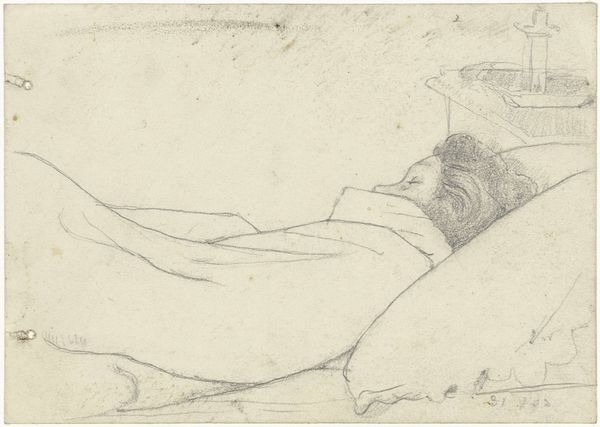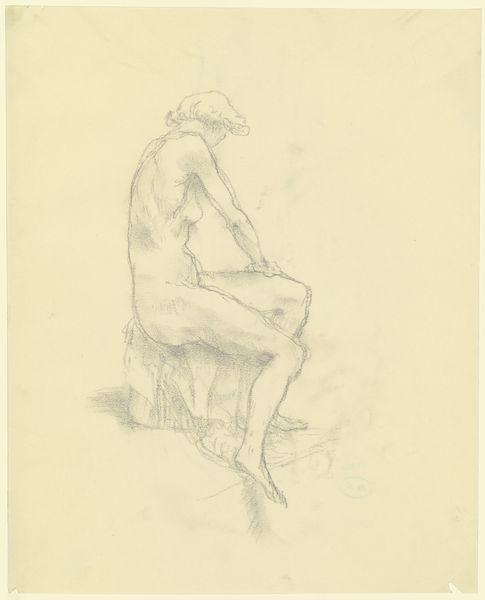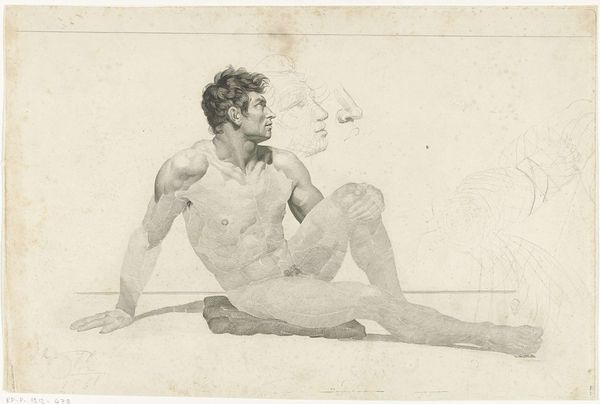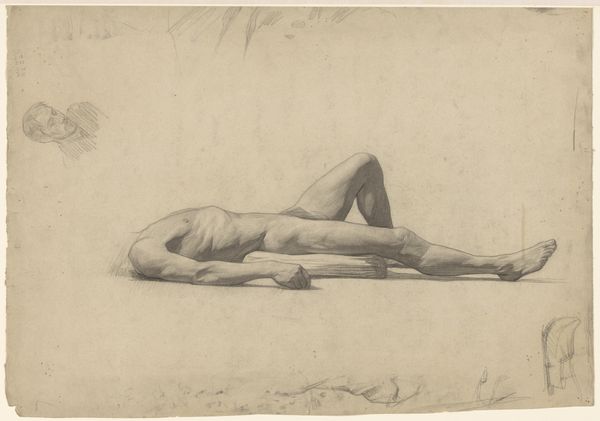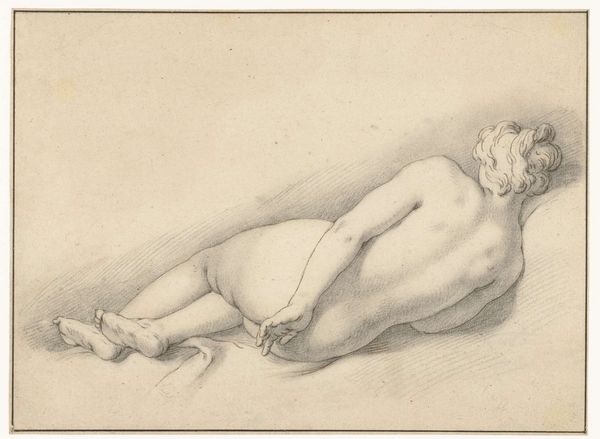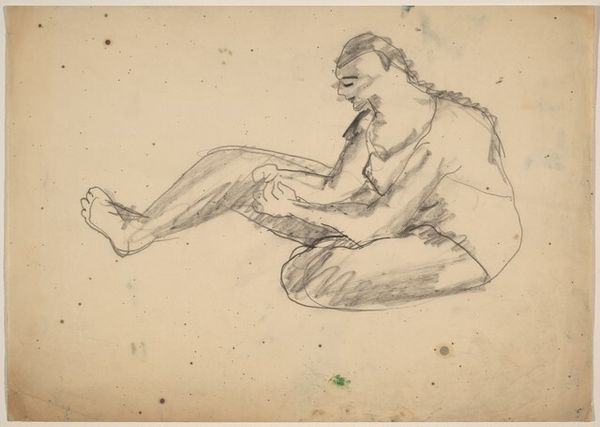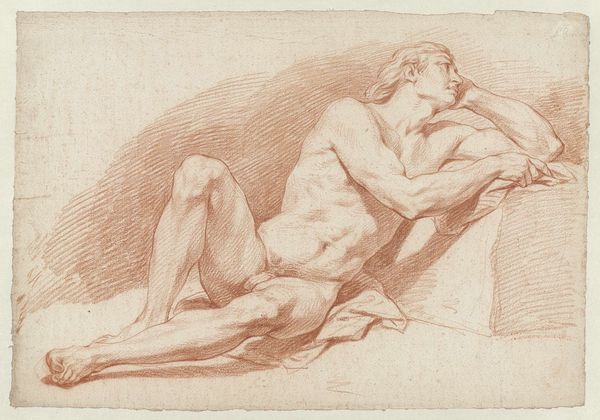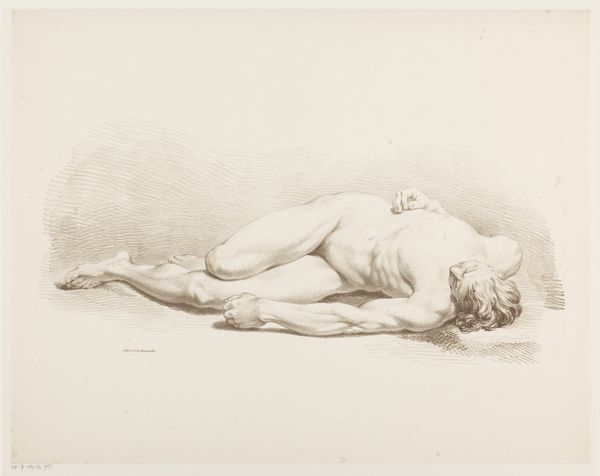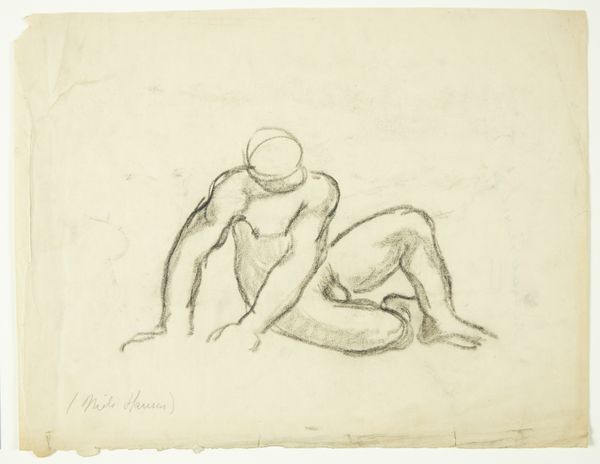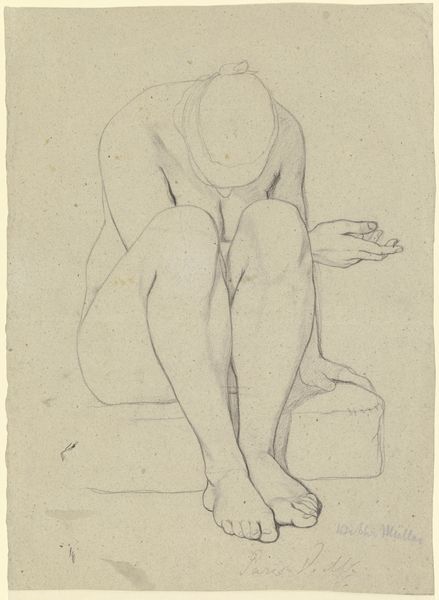
#
pencil drawn
#
amateur sketch
#
light pencil work
#
pencil sketch
#
incomplete sketchy
#
pencil drawing
#
ink drawing experimentation
#
pen-ink sketch
#
portrait drawing
#
pencil work
Dimensions: height 195 mm, width 275 mm
Copyright: Rijks Museum: Open Domain
Curator: So here we have, a quick drawing by Jan Hoogsaat titled "Liggend mannelijk naakt, naar rechts en steunend op de armen," which loosely translates to 'reclining male nude.' We believe it's from around 1664 to 1730. It’s unassuming at first glance, isn't it? Editor: Yes, delicate, almost spectral, but with an intriguing intensity. The pencil work is incredibly subtle, like a ghost of a classical sculpture. There’s a fragility to it, but also an underlying strength in the pose. I find it disarming. Curator: Indeed! I see it as Hoogsaat sort of practicing. Looking at how the man supports himself. It's about labor in a sense; he is holding himself up so there's tension that wouldn't exist if the subject were fully prone. This, of course, begs a lot of questions: who was this man, and why does he exist to service this study of art? Editor: Absolutely! And the way Hoogsaat uses line weight to define form—it's a direct engagement with materiality and labor in mark making. Look how he teases with texture. This almost amateur rendering, though skilled in application, invites us to ponder the labor, the economics and power dynamics inherent in artistic training. Who has access, and whose bodies get to be represented in this way? Curator: Mmm, I can’t help but wonder about the model's comfort. Reclining nude might sound luxurious, but holding that pose...I can’t say it seems natural at all. It hints at those complexities, the human experience hidden within a seemingly straightforward study. Editor: It really speaks to a wider story of materials, consumption, class and artistic skill at the time, don't you think? It brings art away from a precious untouchable state to a mode that helps unpack labor inequities, the reality behind the art process. Curator: You know, I think that fragility that you sensed in the start invites a level of compassion, of intimacy that gets to the nature of both Hoogsaat and his subject, really. A bit more alive to the humanity here. Editor: Exactly! It shifts from representation to engagement. Lovely.
Comments
No comments
Be the first to comment and join the conversation on the ultimate creative platform.
